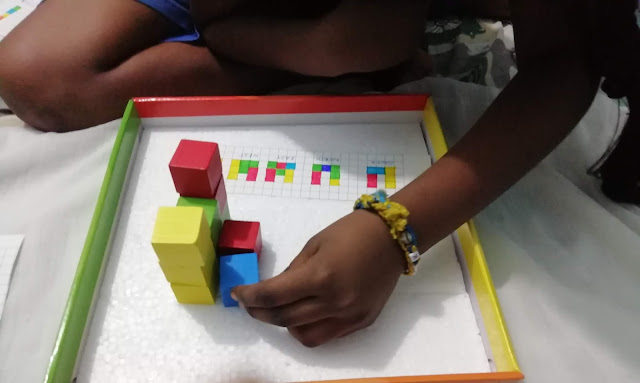Visual Spatial Reasoning is the
capacity to think about objects in 3 dimensions and draw conclusions with
limited information. It helps the children to imagine objects in different
angles and perspectives. It is also an important skill tested in many academic
and professional fields. Skills such as estimating, geometry, measurement,
map-reading and simple drawing are some of the mathematics ideas behind this
topic. Tangram, patterns blocks and tetris are some of the fun ways to promote
this skill amongst young children.
Wooden blocks are another powerful tool to improve spatial thinking skill. You can read more about this here.
As the first level, I used our
wooden blocks to construct various 3D structures and asked my little one to
count the blocks from a particular distance and height. She was not allowed to
come closer.
In the second level, she had to
draw the top view, front view and side views for the 3D structures what I
built.
The third level is little trickier
and what my little one enjoyed a lot. I
drew the top view and side views and asked her to construct the 3D structure
for it.




































